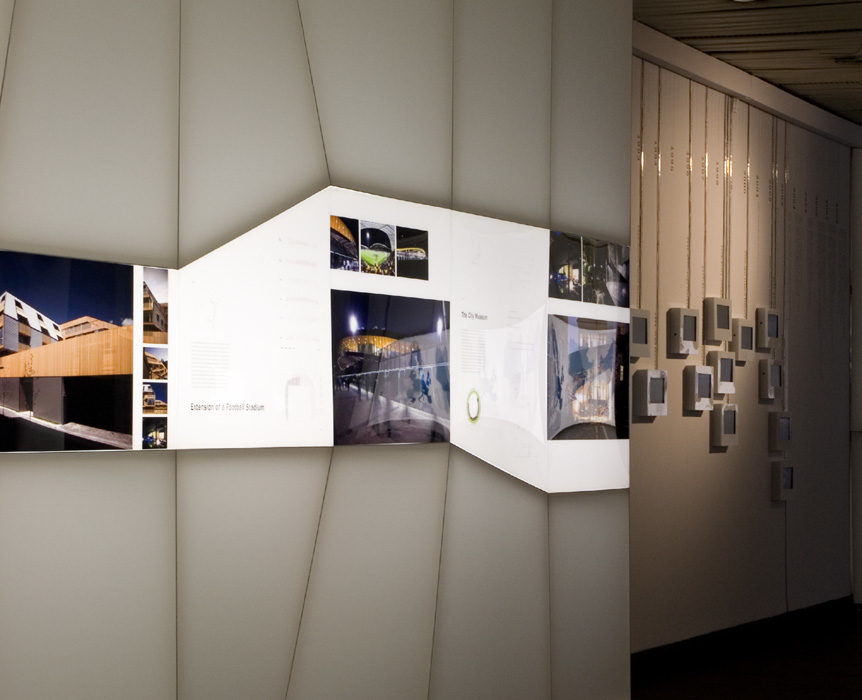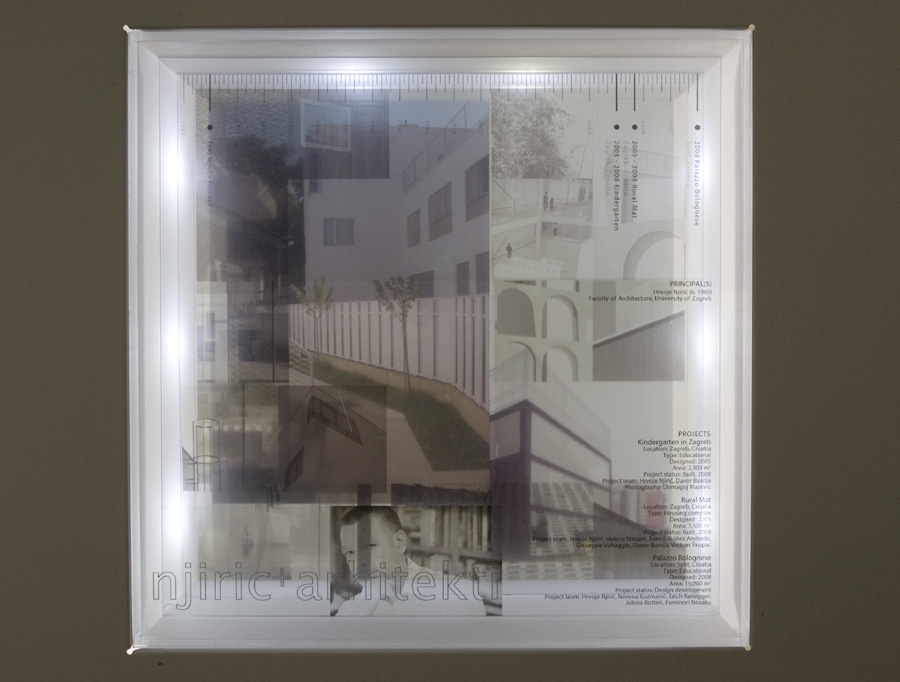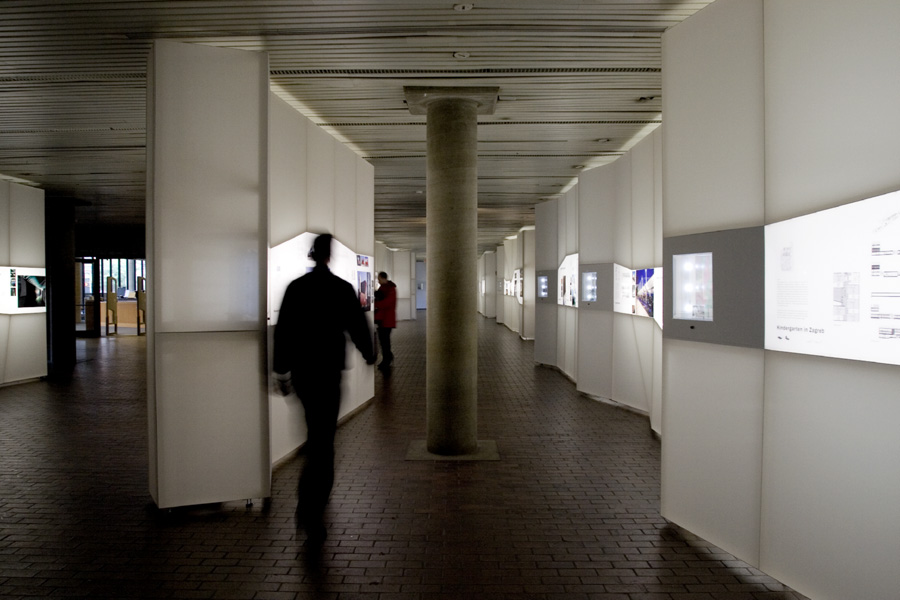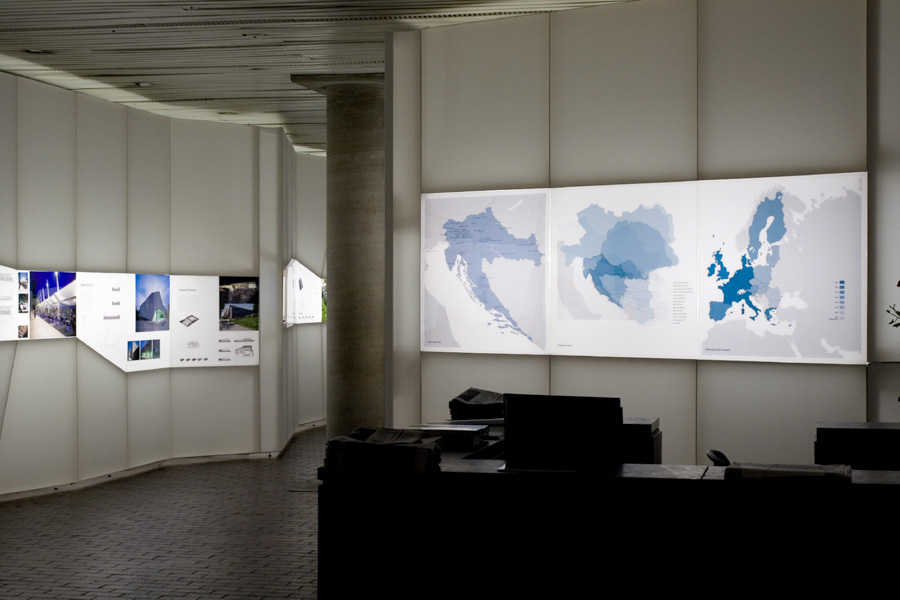New Trajectories: Contemporary Architecture in Croatia and Slovenia

Both Croatia and Slovenia have had a complex cultural, economic, and political history, and now as members of a New Europe are sites of intense, inspiring, and productive architectural and urban debates.
The exhibition focused on innovative practices in architecture and urbanism in Croatia and Slovenia. These architects began their careers at the time of transition from a communist Yugoslavia to a capitalist system of independent nations. This transition became an opportunity, and within a context that facilitated the development of young professionals, they became responsible for providing a new vision for the architecture, and future, of their cities.
Regardless of the locality of the built work, these firms’ production techniques and strategies may be situated at the core of contemporary architectural production. The practitioners teach in schools around the world, participate in biennales, and publish in international media. It is this condition of practice beyond geographical boundaries that situates them as part of a global phenomenon.
Although the exhibition highlighted the work of thirteen practices, it is important to present such work as a reflection of its conditions of production. Despite the shared historical context and common political history, the differences between the two countries and among the firms are vast. Transition may be a shared event, but the circumstances that characterize this process are not. Therefore reconstruction had different focuses and priorities, and certainly different meanings. Still, for ten years, the damaged economies allowed for intellectual development without the pressures of a demanding market. With the creation of successful systems of public competitions, practices with the ability to operate in chaotic and unstable environments have had the opportunity to occupy a place that is traditionally reserved for mature and well-established firms, being able to test innovative ideas at multiple scales and see those projects realized.
Beyond the exhausted comparison between east and west, Croatian and Slovenian young architects have already created a niche for the production of exceptional work, but one that is charged with the legacy of their own architectural traditions. The landscape of contemporary interventions is comfortably integrated with the existing urban fabric, representing a constant negotiation between old and new. A predominant culture that embraces the local modernist heritage, coupled with the propagation of new ideas, instrumentalizes this particular work to emerge. In this spirit, the uniqueness of each of these projects can find a common thread: one that highlights and finds resolution in the logics and assemblies of the designer’s examination of context, space, material and craft.
As the practice of architecture continues to be a media-driven experience and discourses are continually globalized, this work is a clear example that blending in with current tropes is not the only means to become party to the collective international discourse.
Indeed, the next challenge seems to lie in the opening of local economies to international markets. As Slovenia has joined the European Union, soon to be followed by Croatia, these new nations, for better or worse, will become open to foreign investments as well as foreign architects. The local competition protocols may still benefit publicly funded works, but larger corporate interests, coupled with a growing focus on the instant icon, will be an interesting new terrain for these practices. As they have ably demonstrated with the recent accomplishments presented here, the architects of Croatia and Slovenia will certainly enter this next stage, while expanding into global territories, with a confidence stemming from an established milieu and identity.
Mariana Ibanez, Assistant Professor of Architecture
See the Harvard Gazette for a full article on the exhibition.


